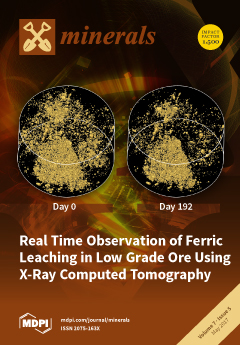Mineral reserve estimation and mining design depend on a precise modeling of the mineralized deposit. A multi-step interpolation algorithm, including 1D biharmonic spline estimator for interpolating floor altitudes, 2D nearest neighbor, linear, natural neighbor, cubic, biharmonic spline, inverse distance weighted, simple kriging, and
[...] Read more.
Mineral reserve estimation and mining design depend on a precise modeling of the mineralized deposit. A multi-step interpolation algorithm, including 1D biharmonic spline estimator for interpolating floor altitudes, 2D nearest neighbor, linear, natural neighbor, cubic, biharmonic spline, inverse distance weighted, simple kriging, and ordinary kriging interpolations for grade distribution on the two vertical sections at roadways, and 3D linear interpolation for grade distribution between sections, was proposed to build a 3D grade distribution model of the mineralized seam in a longwall mining panel with a U-shaped layout having two roadways at both sides. Compared to field data from exploratory boreholes, this multi-step interpolation using a natural neighbor method shows an optimal stability and a minimal difference between interpolation and field data. Using this method, the 97,576 m
3 of bauxite, in which the mass fraction of Al
2O
3 (
Wa) and the mass ratio of Al
2O
3 to SiO
2 (
Wa/s) are 61.68% and 27.72, respectively, was delimited from the 189,260 m
3 mineralized deposit in the 1102 longwall mining panel in the Wachangping mine, Southwest China. The mean absolute errors, the root mean squared errors and the relative standard deviations of errors between interpolated data and exploratory grade data at six boreholes are 2.544, 2.674, and 32.37% of
Wa; and 1.761, 1.974, and 67.37% of
Wa/s, respectively. The proposed method can be used for characterizing the grade distribution in a mineralized seam between two roadways at both sides of a longwall mining panel.
Full article





